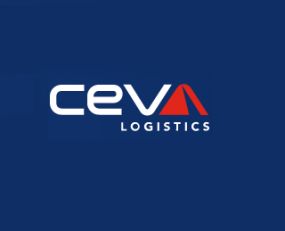
CEVA Logistics has recently engineered an innovative rail transport solution in North America for Scuderia Ferrari’s F1 racing team. In a world first for Formula 1, Ferrari equipment is traveling by rail between three of the North American F1 grand prix races in an effort by the two companies to reduce carbon emissions.
CEVA has been transforming the Scuderia Ferrari logistics program since the beginning of their partnership in 2022. The flow of the six separate 45-ton equipment kits that traverse the globe has transitioned away from air freight to a primary combination of ocean and road freight as CEVA ensures the equipment reaches each of the 23 Grand Prix racing venues on time.
For the 2023 season, the global logistics player proposed a new solution—to transport the equipment kit by train in North America to reduce the transport’s carbon emissions. Packed in six 53-ft (16-m) containers, the race equipment traveled approximately 2,000 miles from Montreal, Canada, to Austin, Texas, and will travel another nearly 2,000 miles from Austin to Las Vegas, Nevada.
CEVA’s project team calculated that the solution incorporating rail segments between the three F1 races reduced carbon emissions by 90 percent compared to the equivalent journey by air and 32 percent versus an all-road, trucking solution.
Complex logistics expertly handled
Finding the right routing to connect the various kits between races is an intricate logistics puzzle, but the extensive rail network across the U.S. makes the solution possible. CEVA’s project team is working closely with rail companies to synchronize the rail transport precisely with the Formula 1 Grand Prix schedule.
The rail transport for Scuderia Ferrari in North America is being combined with road transport from the rail terminal points. Coordination between these different modes requires strict management to ensure the smooth transition of goods from one mode to another. Moving equipment by train also calls for specialized handling, coordination and proactive contingency planning on the part of CEVA’s project team to ensure that everything arrives on time.
For example, the equipment traveling from Montreal to Las Vegas via Austin required storage and road transport between CEVA’s Dallas hub location and the Austin Grand Prix venue and will require the same treatment between CEVA’s Los Angeles facility and the Las Vegas Grand Prix racetrack.
Logistics provider of choice
As Scuderia Ferrari’s logistics provider since 2022, CEVA expects the various F1 equipment kits to travel more than 130,000 miles in 2023. Choosing more sustainable transport options means CEVA is supporting Ferrari’s emission reduction efforts and promoting more sustainable business practices. As part of the CMA CGM Group, CEVA is committed to reaching net zero by 2050. Ferrari aims to reach carbon neutrality by 2030.
Mathieu Friedberg, CEO, CEVA Logistics said:
“The partnership with Scuderia Ferrari underlines the trust that major brands place in us to provide leading solutions, and this trial demonstrates how sustainability improvements in logistics can significantly reduce carbon emissions for Formula 1 and beyond.
“We’re committed to engineering the best logistics solutions for Ferrari, and that includes finding better ways to transport their equipment and reduce the environmental impact. This initiative is in line with our long-term vision and demonstrates our commitment to working closely with our customers on more sustainable and efficient transport solutions.”
Frédéric Vasseur, Team Principal & General Manager of Scuderia Ferrari, said:
“Slashing CO2 emissions in the logistical chain of motorsport, and beyond, presents many challenges. This pilot project with CEVA Logistics is very interesting in terms of transport decarbonisation, but we’re not stopping here: we’ll continue to research new sustainable solutions. To achieve climate targets, constant dialogue with partners and experimentation are more important than ever.”
Source: CEVA